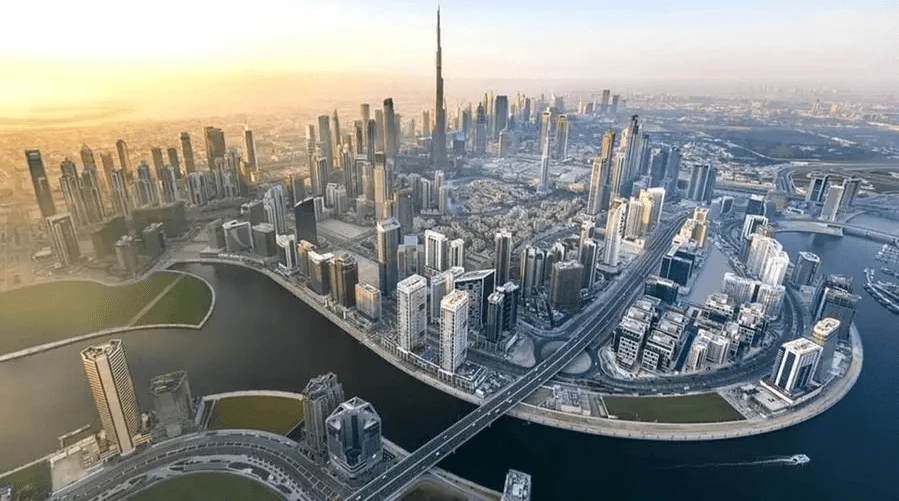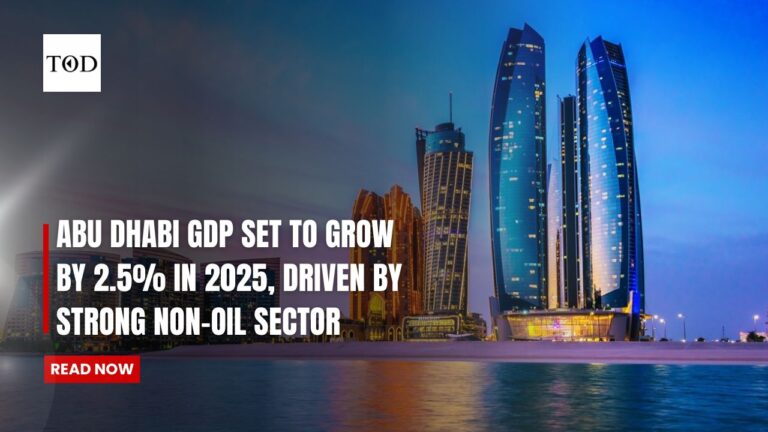Abu Dhabi, May 28, 2025 – The steady economic growth path persists in Abu Dhabi this year. S&P Global Ratings, in an updated report, has suggested that the emirate’s economy will grow by 2.5% in the year 2025. That being said, this positive outlook for the Abu Dhabi GDP is shaping while Abu Dhabi continues diversifying its economy and strengthening sectors outside of oil, with Abu Dhabi GDP being highly considered by policymakers and investors.
Whereas the Abu Dhabi GDP has stood strong in the past couple of years with the global markets rattled by uncertain forces, the economic experts maintain that the strong financial positions in the emirate, coupled with stable government policies, were mainly behind this growth. The report states that while the growth in Abu Dhabi GDP is supported by the oil revenues, there is a growing non-hydrocarbon sector that is playing a much greater role than ever before.
Non-Oil Sector Boosts Abu Dhabi GDP
GDP has cemented steady improvement, with economic activities outside oil and gas performing robustly. Real economic growth stood at 3.8% in 2024 as against 2.4% in 2023, with the non-hydrocarbon segment growing at 6.2% during the year and being the biggest contributor. Finance, insurance, construction, manufacturing, and wholesale and retail trade showed major contributions and continued to support the efforts for the diversification of the Abu Dhabi economy.

For the first time ever, the non-oil economy contributed 54.7% of the total Abu Dhabi GDP. This share is the highest ever recorded and stands as an indicator of the progress made in reducing Abu Dhabi’s dependency on oil. The diversification-led economy is being seen at work, hence protecting Abu Dhabi GDP from sudden shifts in global oil prices.
Oil Production and Fiscal Strength Support Growth
While non-oil production sectors advance further, oil production remains an important portion of Abu Dhabi’s GDP. With OPEC+ quotas being gradually lifted, oil output is anticipated to increase over the coming years. In oil production, an estimate was made whereby it would be 2.95 million barrels per day in 2024 and 3.04 million barrels per day in 2025; in the meantime, with the ups and downs, the production levels could reach 3.5 million barrels per day in 2028, which will provide another impetus for the Abu Dhabi GDP.

The strong fiscal position of the emirate acts as a shield against economic shocks. Abu Dhabi recorded a fiscal surplus of nearly 6.7% of GDP in 2024, about the same as the previous year. Although the surplus will narrow to 2.8% in 2025, it will widen again to some 6% averagely from 2026 to 2028. An enormous net asset position of the government is expected to be 327% of GDP in 2025, thus making it financially stable, whenever oil prices fluctuate.
S&P Global Ratings recently affirmed the sovereign credit rating of Abu Dhabi at AA/Stable/A-1+. The agency stated that any regional tensions should have a limited effect on Abu Dhabi GDP given continued domestic stability. Government surpluses are also forecast to persist over the next few years, assuming steady oil prices.
Population Growth and Investment Drive Demand
Abu Dhabi’s population is forecasted to appreciate by 3% per annum till 2028. Entering into new employment opportunities, ongoing reforms, and mammoth infrastructure projects. With more and more people moving into the emirate, the domestic demand and investments are expected to stay strong. This will further bolster the GDP of Abu Dhabi and hold on to economic expansion for the following years.

By the turn of 2025 and beyond, these forecasts for Abu Dhabi GDP project a period of steady growth. Diversifying the economy, increasing oil production, and strong fiscal discipline lay the foundations for this favorable outlook. The bolster from both the non-oil and oil sectors assures that Abu Dhabi GDP must keep on standing strong and resilient against the trials of the world.
Read More: UAE Digital Degree Service Enables Quick Verification of Private Sector Employees
.















